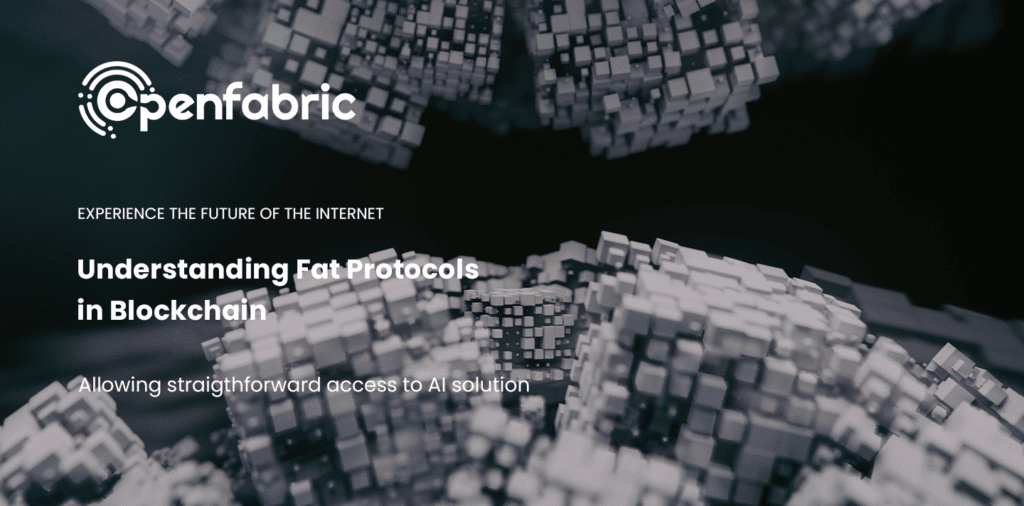
September 20, 2022 4 minutes read
Understanding Fat Protocols in Blockchain

There is a massive difference between the internet and the blockchain. Some researchers even term them polar opposites. If we picture the internet as an information machine, then the blockchain is the truth machine. On the internet, we get a free flow of information at a very low cost but authenticity and traceability are missing. Meanwhile, blockchain technology guarantees that once information is stored on the blockchain, it is immutable and traceable.
The distributed ledger technology that backs blockchain envisions a world with open-source and free-to-use applications for the masses. While the list of differences between the internet and blockchain is long, the key difference – that is the point of our discussion – is how the value is distributed in each.
What are Fat Protocols?
On the internet, value is distributed at the application layer while in blockchain it is distributed at the protocol layer. Value distribution-wise, the internet stack is made up of thin protocols and fat applications. This value is generated and recaptured at the application layer in the form of large amounts of data. A simple look at the functioning of Big Tech like Google, Amazon, and Facebook clearly highlights this concept.
Blockchain is implemented in such a way that renders this value concentration the other way around. Value is accumulated in the shared protocol layer while only some of it makes its way to the application layer. Thus, the blockchain stack has a fat protocol and thin applications.
Incentivizing the creation of Protocols
Major protocols such as HTTP and TCP/IP have been the brainchild of researchers. Their further development was pushed forward by nonprofit organizations but ultimately commercial interests hindered this process. Now with the blockchain, cryptographic tokens have emerged as a new way of incentivizing the creation of protocols. Companies can create a new protocol and sell the associated tokens to the public. Tokens can be issued or redeemed digitally in a very convenient manner. Some tokens may even be kept by the company to maintain value for itself (and possibly for investors).
All this is a revolutionary paradigm shift because in the past the only means to make money off a protocol was by creating applications for it and then selling that particular software. In contrast, tokens offer a far better monetization option for protocol creators.
Leveraging Fat Protocols via Openfabric
The blockchain stack has much to offer in terms of value creation to its users. Even though the tokens play a major role in incentivizing users, there is another underlying factor that gives blockchain projects like Bitcoin and Ethereum their massive market cap while the applications built on top of them have a proportionally smaller value.
The second factor that we referenced is the shared data layer. Blockchain projects offer decentralized storage of information across the network. So, instead of having multiple applications that each have control of a particular set of information, we get a network where user data is replicated and stored across it. This results in a healthier ecosystem and the barrier to entry is massively reduced. The Openfabric platform utilizes this principle to the full effect and enables its users to derive the maximum value out of the blockchain technology. Users can easily start using and benefit from the distributed ledger system without facing any prominent barriers to entry. The value creation process in Openfabric is made pretty straightforward and users can build cutting-edge blockchain applications through the platform.
Openfabric also successfully handles the monetization aspect and as an added bonus users get the ability to monetize their blockchain applications without having to worry about anything. The platform performs all the legwork for the user and handles all known hurdles that typically make the process difficult. This empowers the users to give their full undivided focus to the core idea and how it can help solve the intended problem and give value to the community at large.
Learn More about Openfabric
The Openfabric platform has emerged as a one-stop solution for blockchain and AI technology. It offers a platform that enables users to get going with AI and blockchain and build exciting new applications using the latest tools and technologies. The project is striving hard for a future where everyone has equal access to AI. In order to learn more about how Openfabric is working to make this dream a reality, you can visit our blog or tune in to our social media channels such as Twitter, Telegram, Linkedin, Facebook, and Youtube for the details. If you’re looking for a deeper technical insight into the working of the platform, you can read the Openfabric whitepaper.

